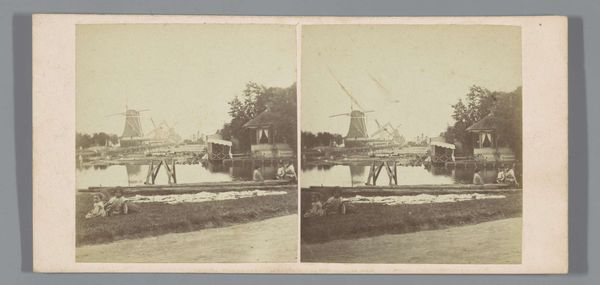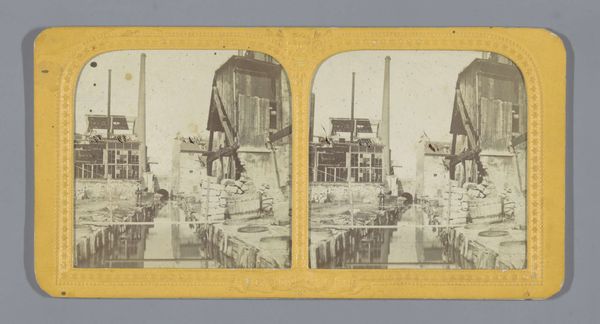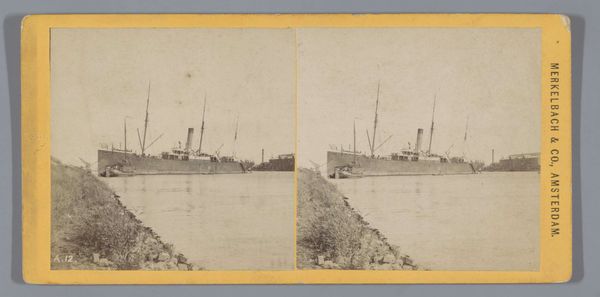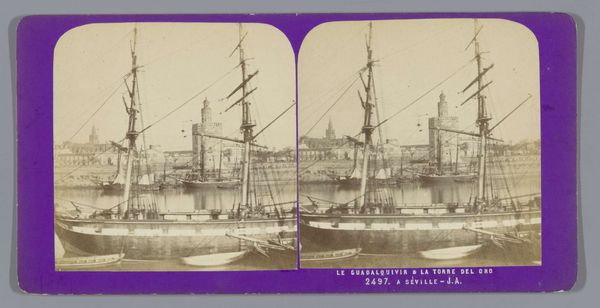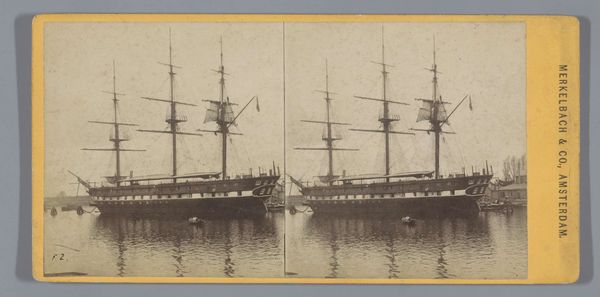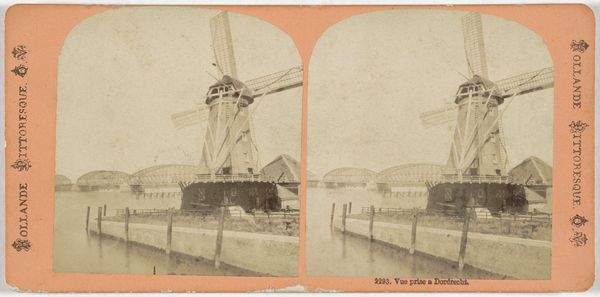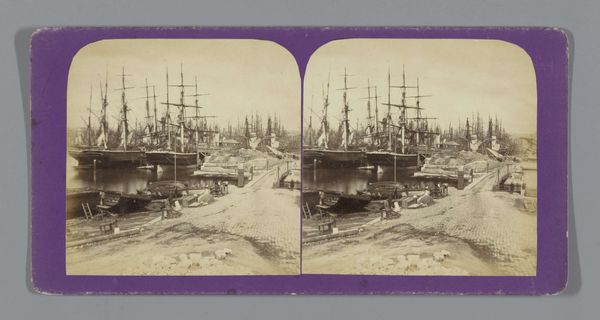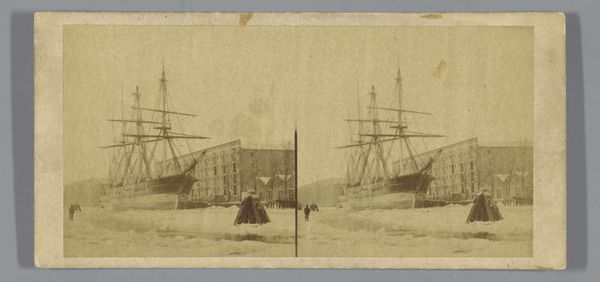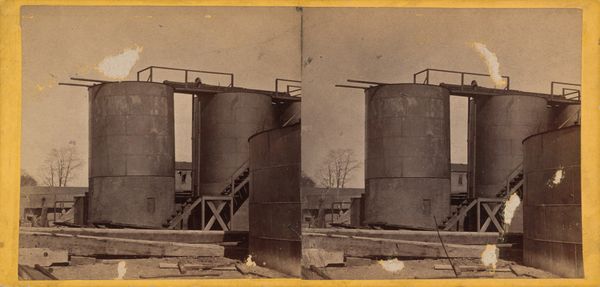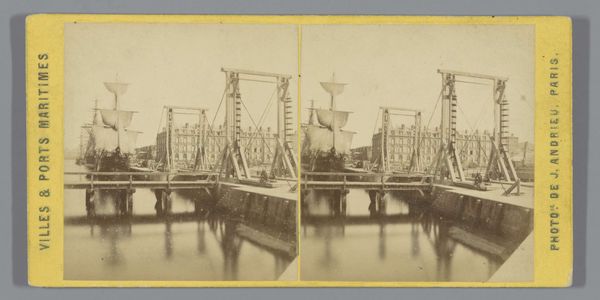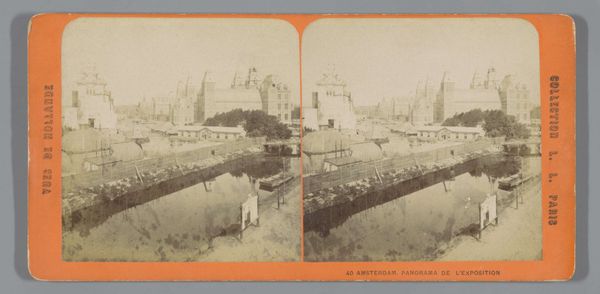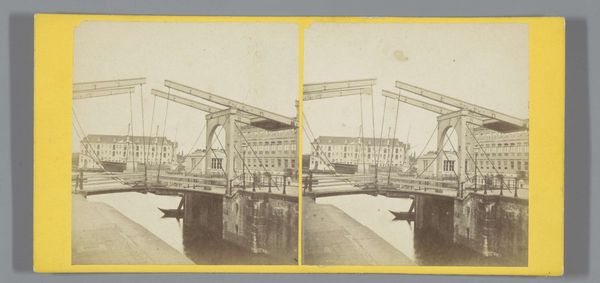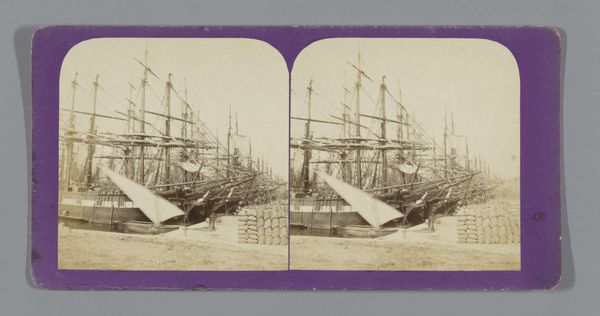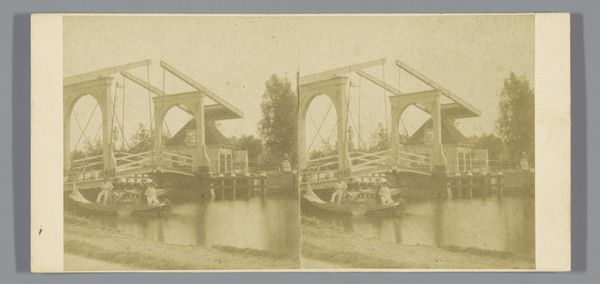
Gezicht op de houtzaagmolen bij de Raam-Barrière in Amsterdam 1860 - 1885
0:00
0:00
pieteroosterhuis
Rijksmuseum
print, photography, gelatin-silver-print
#
dutch-golden-age
# print
#
landscape
#
photography
#
coloured pencil
#
gelatin-silver-print
Dimensions: height 83 mm, width 170 mm
Copyright: Rijks Museum: Open Domain
Pieter Oosterhuis made this albumen print stereograph in Amsterdam, showing a windmill with logs floating in the foreground. This isn't just a picturesque scene, but a portrait of industry. The logs and windmill represent a large-scale milling operation, converting raw materials into standardized planks. The image also documents the process of capitalism, and the means of production at the time. Note the contrast between the delicate photographic print, and the robust forms of the timber. Oosterhuis's choice of photography as a medium is also significant: it was an innovative method of documentation, mirroring the industrialized process it captured. Photography itself involved chemical processes and specialized equipment, requiring skilled labor. By focusing on the sawmill, Oosterhuis directs our attention to the labor involved in transforming raw materials into usable goods. It highlights the value of labor and its relationship to technological progress. It also invites us to reflect on the intersection of industry, art, and society in the 19th century.
Comments
No comments
Be the first to comment and join the conversation on the ultimate creative platform.
